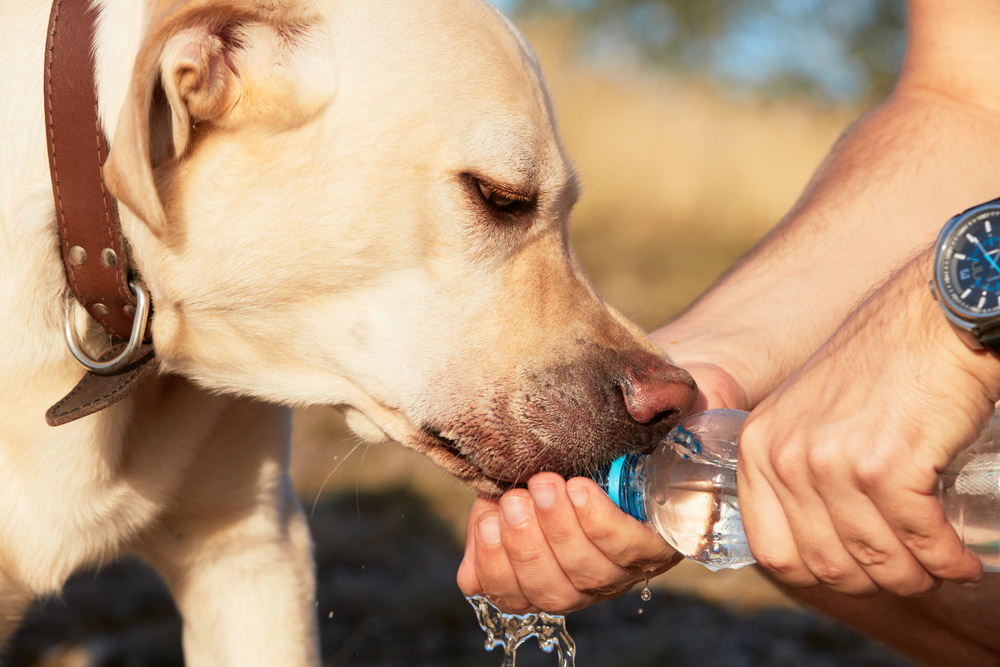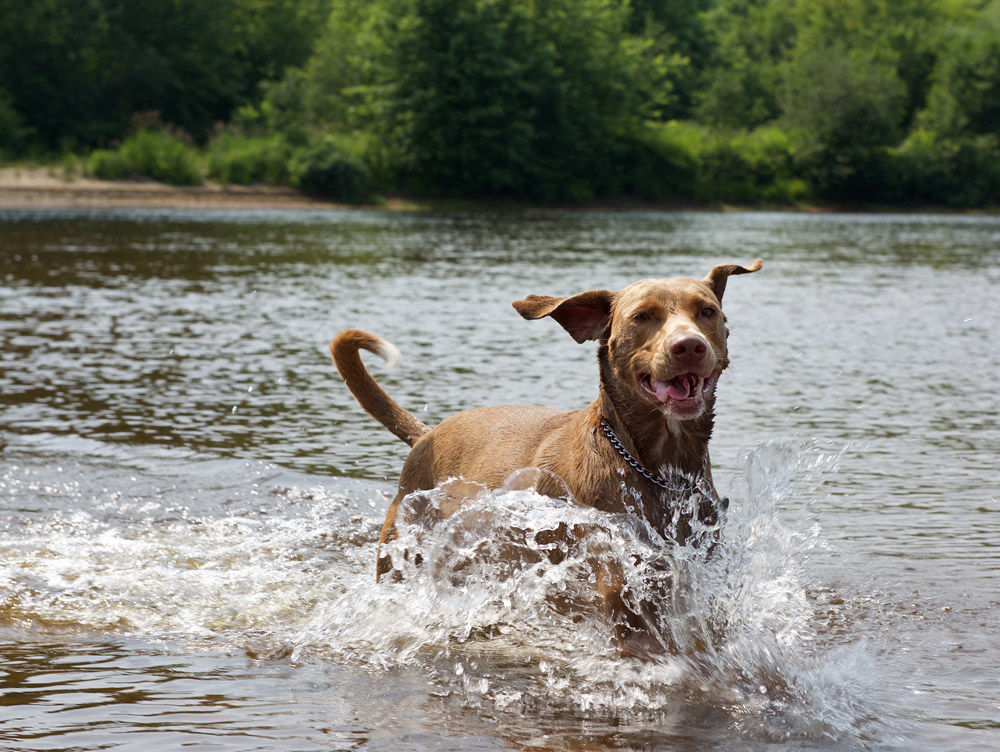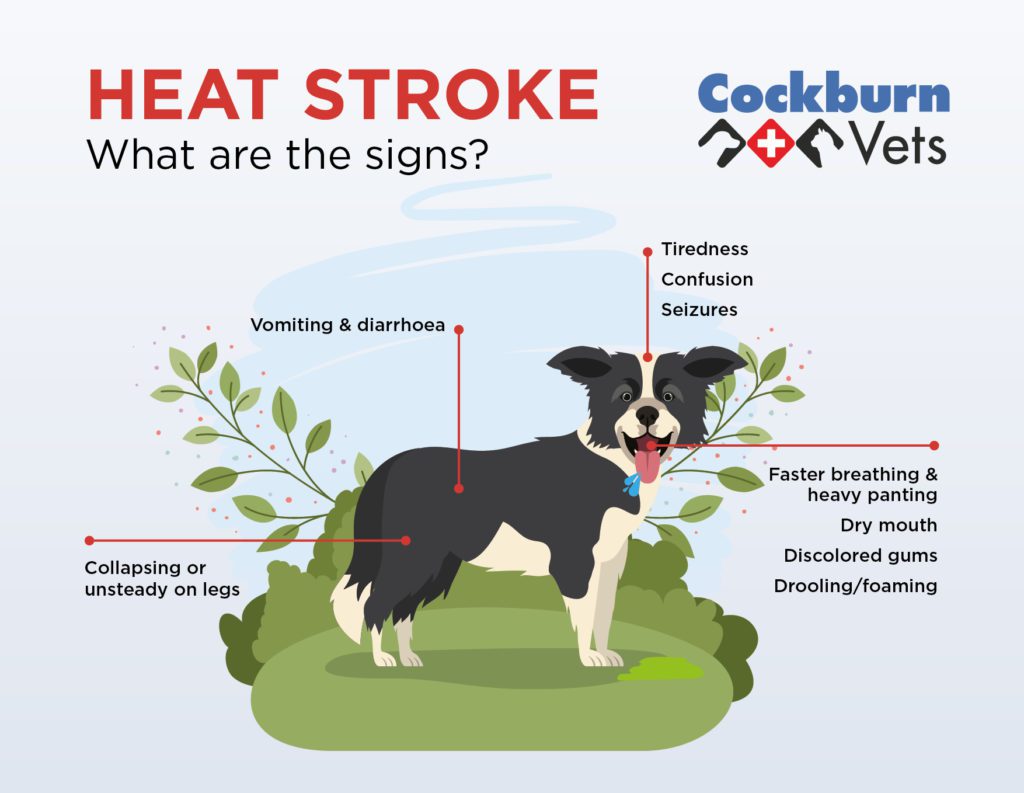Heatstroke in dogs
As temperatures rise during the summer, we’re able to get out and enjoy the longer days and beautiful weather with our dogs.
As humans, we know we need a cold drink or to find some shade when we’re getting too hot, but dogs aren’t as self-aware. It’s also instinctive for dogs to hide any sign of weakness, and even if they’re struggling – they can’t tell us.

When can heatstroke happen? Is it a problem in the UK?
Heatstroke (also known as hyperthermia) describes a body temperature that has risen above normal limits. In this case, we’re looking at temperatures elevated by environmental factors rather than illness. Heatstroke can happen in relatively mild temperatures from around 21 degrees Celsius and higher.
If a dog’s body temperature exceeds 41.2c, it can even lead to organ failure, so it’s essential we know what to look out for.
Dogs who have been exercising vigorously in heat, are overweight, have underlying health problems or suffer from breathing difficulties, such as flat-faced breeds, are often the first to suffer. It’s also well publicised that leaving dogs in cars – even with windows open and water available – can quickly cause problems, even on a cooler day.
Unlike us, dogs can’t sweat to control their body temperature but pant instead. Muzzled dogs can often suffer from heatstroke quite quickly as their ability to pant is restricted, so it’s essential to pay extra attention in these situations.
What are the signs to look out for?
A dog suffering from heatstroke will usually begin to show several of these symptoms:
- Faster breathing and panting
- Dry mouth and dry, discoloured gums, alternatively drooling and foaming at the mouth
- Weakness
- Vomiting
- Diarrhoea
- Tiredness
- Confusion
- Occasionally seizures
Heatstroke is an immediate medical emergency, and if you think your dog might be displaying these symptoms, you need to act quickly to reduce their body temperature safely. The quicker they can be cooled down, the better their chance of a full recovery, but be careful not to use very cold water or ice packs as this is too much of a shock.
What can you do?
Some things you can try are:
- Pouring cool water over them, concentrating on their head, stomach, armpits and anywhere else with less fur.
- Applying cool cloths to the areas above, changing them often, so they remain cold. Don’t cover them in one cool towel or cloth as this could elevate their temperature further
- If you’re at home, put them on a towel in the bath and give them a cool shower
- Find a ventilated spot
- Offer them water
- Speak to them calmly and reassure them that everything is ok
If you remain concerned or if they had heatstroke for a while before recovering, call us and we will of course see them.

How can I avoid my dog getting heat stroke?
Here are our top tips for warmer times:
- Exercise your dog when it’s cooler – either morning or evening are ideal
- Take water and a bowl with you if you’re travelling in the car or walking somewhere without water bowls
- Avoid hot pavements and sand
- Never leave your dog in a car when the sun is out
- Keep your dog a healthy weight
- If they have a thick coat, consider having them clipped during warmer months
- Watch how enthusiastically they’re running around. If it’s vigorous and a hot day, keep it short
- Find shade when you can or limit the amount of time you’re out
- Encourage them to swim if you’re near water and they like it. A hose pipe in the garden can also be fun!
- If you have a brachycephalic (flat-faced) dog, a harness is often a better option than a lead as it doesn’t restrict their panting



